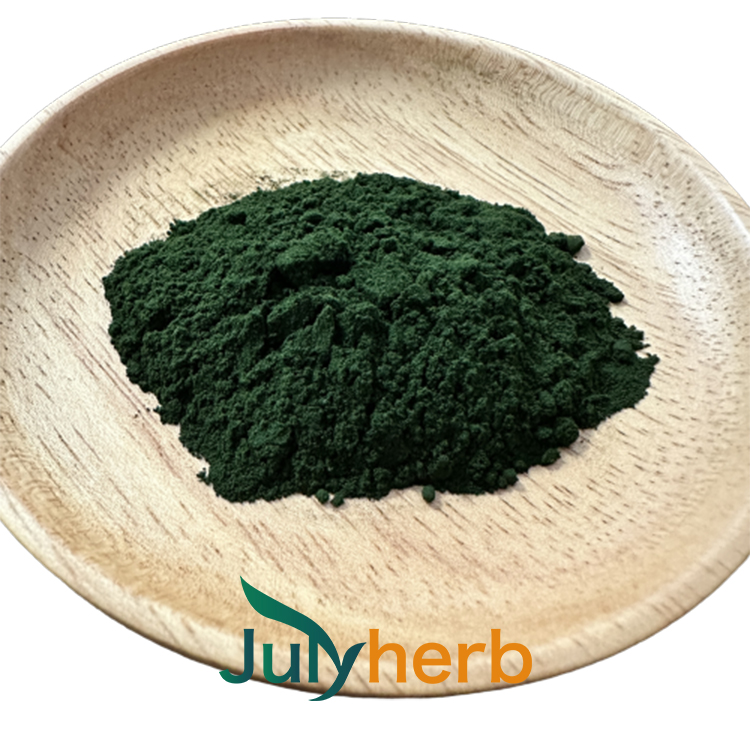Magical Plant Wonder Natural Pigment Gardenia Green
Gardenia, delicate and charming, has a long history and is famous for its beauty and fragrance. In this article, we’ll delve into the origins of the gardenia, explore its physiological properties, and reveal the fascinating world of nature’s wonders. Additionally, we will discuss the potential benefits of gardenia extract derived from this stunning flower.

Gardenia has a charming presence due to its soft petals and fragrant fragrance. Gardenia is believed to have originated in Asia, especially in China, Japan, and India, and has been valued and cultivated for centuries. Gardenia is highly praised for its charming beauty and symbolic significance, often used in traditional rituals and as a gift to express love. From a physiological perspective, gardenia flowers have charming characteristics. Firstly, these perennial plants belong to the Rubiaceae family and are known for their scientific name “Gardenia”. They usually grow as shrubs and are adorned with smooth dark green leaves, contrasting sharply with beautiful white or yellow flowers.
Gardenia has a unique reproductive structure, making it very unique. Gardenia is called a complete flower because each flower has male and female reproductive organs. Male stamens produce pollen, while female pistils (including stigma, style, and ovary) promote fertilization. This extraordinary self fertilization mechanism ensures the successful reproduction of gardenia flowers.
Gardenia not only has stunning visual effects, but also contains a variety of beneficial health compounds. One of the compounds is gardenia extract, which has become popular in recent years due to its potential medicinal properties. Gardenia extract is obtained from the fruit of the gardenia plant through fermentation and processing, commonly known as gardenia green or gardenia flower. Number of arcs. This extract is rich in antioxidants and has anti-inflammatory properties. These antioxidants help protect human cells from harmful free radicals and reduce the risk of chronic diseases such as cardiovascular disease and cancer. Gardenia extract also shows promising prospects in promoting liver health. Research has shown that this extract may help reduce liver inflammation and prevent liver damage by improving the antioxidant defense system of liver cells.
But today we are going to talk about gardenia green pigment, which is a natural edible pigment extracted from the fruit of the Rubiaceae plant gardenia. The main components are carotenoids, saffron, and saffron acid. This product is a light green to dark green powder made by mixing gardenia yellow and gardenia blue. It is easily soluble in water and ethanol aqueous solutions, and insoluble in organic solvents. Its color tone and stability are almost unaffected by the pH value.
Gardenia green, also known as gardenia extract, is extracted from the fruits of gardenia plants native to Asia. This extract is obtained by extracting pigments from gardenia fruit using solvents, followed by concentration, filtration, and drying.
The resulting product is a natural green powder, commonly used as a food additive to give food and beverages an enticing green color. One of the main advantages of gardenia green is its natural source, which sets it apart from synthetic food pigments. With the increasing demand for clean label products and concerns about artificial additives, Gardenia Green offers a natural alternative that attracts health conscious consumers. It does not contain synthetic chemicals and provides a safe and visually appealing choice to enhance the attractiveness of food. In addition to its visual appeal, gardenia green is also known for its antioxidant properties.It contains high concentrations of natural antioxidants, such as polyphenols and flavonoids, which help protect the body from oxidative stress and harmful free radicals. Antioxidants can reduce the risk of chronic diseases and support immune function, playing a crucial role in overall health. By incorporating gardenia into our diet, we have introduced a natural source of antioxidants that can promote our overall health. The health benefits of gardenia green are not limited to its antioxidant properties. The extract is also believed to have anti-inflammatory and antibacterial effects. These characteristics make it a promising ingredient for health conscious individuals seeking natural food additives to support their immune system and overall health.
Gardenia green is not only safe to consume, but also has a wide range of uses. It can be used in various food and beverage products, including dairy products, candies, baked goods, beverages, and even cosmetics. It gives these products a bright green color, which can enhance their visual appeal and make them more attractive to consumers. In addition, its natural aroma adds a touch of freshness to the product, further enhancing the sensory experience. The use of gardenia green as a food additive has also extended to the field of nutrition. It can be used to fortify essential nutrients such as vitamins and minerals in food without altering its taste or texture. This is particularly useful for developing countries with widespread nutritional deficiencies. By adding gardenia green to the staple food, the nutritional status of the population can be improved by providing additional sources of essential nutrients. Although gardenia green has many benefits, its use as a food additive should be regulated to ensure its safety and effectiveness. Regulatory authorities have established guidelines and restrictions on the use of gardenia green in food to mitigate any potential risks. Compliance with these regulations is crucial to ensuring responsible use of Gardenia Green and its optimal benefits, while protecting consumer health. And gardenia green is also widely used in the dyeing of textiles, as this pure natural pigment is easy to color textiles. When dyeing, simply boil the fresh and tender fruits or stem skins in water to make a dye solution. Dip the fabric in a weak acid or weak alkaline dye solution to obtain a green fabric with excellent color fastness, light resistance, acid resistance, and alkali resistance. For example, use a reducing agent in a weak acid solution for reduction dyeing.
In summary, the pure natural pigment of gardenia can not only be used on clothing fabrics, but also as a natural colorant in food and cosmetics, making it non-toxic and harmless to the human body. The gardenia green extracted from the gardenia plant is a natural food additive with multiple effects. Its natural sources, antioxidant properties, and potential health benefits make it a favorable substitute for synthetic food pigments and additives. Whether adding charming green hues to our favorite foods or adding essential nutrients to them, gardenia green provides the food industry with a multifunctional and health conscious choice. The use of natural food additives such as gardenia green is a step towards a healthier and more sustainable food future.
